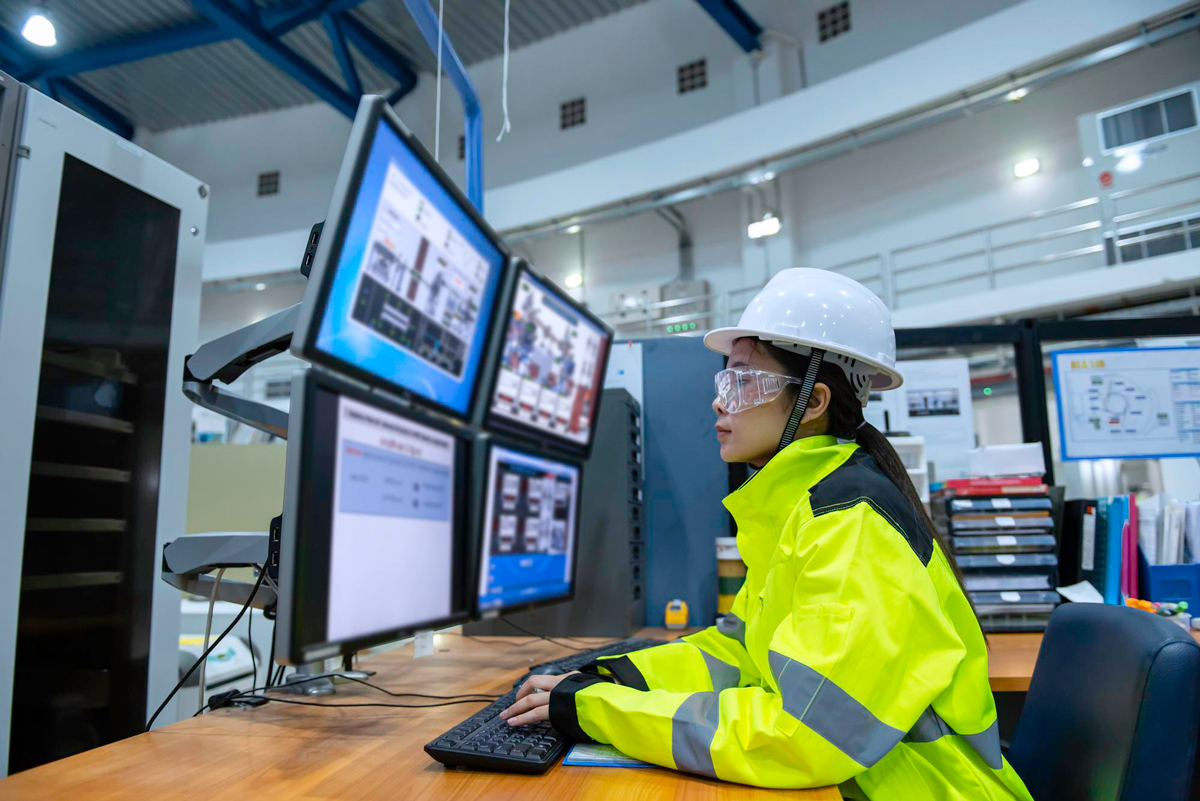In 2025, the construction industry is experiencing a technological revolution, with advanced transforming construction monitoring tools enhancing efficiency, accuracy, and safety. Traditional methods, often labor-intensive and error-prone, are being replaced by innovative technologies. According to a recent industry report, the global construction technology market is expected to grow at a CAGR of 16.2% from 2021 to 2028, reaching $62.4 billion.
Key advancements such as drones, Building Information Modeling (BIM), Internet of Things (IoT) sensors, Artificial Intelligence (AI), and Augmented Reality (AR) are leading this transformation. These technologies offer real-time data, improved project management, and proactive maintenance, fundamentally reshaping transforming construction monitoring and driving the industry towards a more efficient and safer future.
Table of Contents
Advancements in Transforming Construction Monitoring
In recent years, transforming construction monitoring has undergone significant transformations, driven by the need for increased efficiency, accuracy, and safety. Traditional methods, often labor-intensive and prone to human error, are being supplanted by cutting-edge technologies that offer real-time insights and data-driven decision-making.
Drones and Aerial Imaging have revolutionized site inspections and progress tracking. Equipped with high-resolution cameras and sensors, drones provide comprehensive aerial views of construction sites, capturing data that is critical for monitoring project progress, identifying potential issues, and ensuring safety compliance. Their ability to access hard-to-reach areas without risking worker safety makes them invaluable in modern construction.
Building Information Modeling (BIM) is another pivotal advancement. BIM allows for the creation of detailed 3D models that integrate various aspects of a construction project, from design to execution. This technology facilitates better collaboration among stakeholders, reduces errors, and enhances the accuracy of project planning. By simulating different scenarios, BIM helps in predicting potential challenges and devising effective solutions in advance.

Internet of Things (IoT) sensors are increasingly being embedded in construction sites to monitor a plethora of parameters, including structural health, temperature, humidity, and equipment usage. These sensors provide real-time data, enabling proactive maintenance and immediate response to any anomalies, thereby enhancing the safety and longevity of structures.
Artificial Intelligence (AI) and Machine Learning are also making significant inroads. These technologies analyze vast amounts of data collected from various sources, offering predictive analytics and automated processes. AI can identify patterns and predict potential issues, allowing for timely interventions and optimizing resource allocation.
Lastly, Augmented Reality (AR) and Virtual Reality (VR) are transforming the way construction projects are visualized and managed. AR and VR enable immersive simulations of construction sites, aiding in training, planning, and remote inspections. These technologies enhance understanding and communication among project teams, leading to more efficient project execution.
Together, these advancements are reshaping transforming construction monitoring, making it more precise, efficient, and safer than ever before.
Suggested article to read: Explore the Impact of Augmented Reality in Construction (2025) | Machine Learning in Construction
Integration and Interoperability of Technologies
The integration and interoperability of advanced technologies in construction monitoring are crucial for maximizing their potential benefits. However, combining these diverse technologies presents significant challenges.
Integration Challenges: One major issue is data compatibility. Different technologies often generate data in various formats, making it difficult to consolidate and analyze comprehensively. Ensuring seamless communication between disparate systems, such as BIM software, IoT sensors, and drone data, requires robust data integration frameworks. Additionally, the lack of standardized protocols can hinder the interoperability of these technologies.
Solutions and Best Practices: To overcome these challenges, adopting open standards and interoperable platforms is essential. Open standards facilitate seamless data exchange and integration across different systems. Implementing a centralized data management system can also help in consolidating data from various sources, providing a unified view for better decision-making. Collaboration between technology providers and construction firms is vital to develop customized solutions that address specific integration needs.
Ultimately, effective integration and interoperability of construction monitoring technologies enhance project outcomes, driving the industry towards a more connected and intelligent future.
Suggested article to read: The Future of Smart Construction; 2025 Review

Conclusion
The advancements in construction monitoring technologies are revolutionizing the industry by enhancing efficiency, accuracy, and safety. Drones, BIM, IoT sensors, AI, and AR/VR are leading this transformation, offering real-time insights and enabling data-driven decision-making. These technologies improve site inspections, project planning, structural health monitoring, and overall project management.
However, the successful integration and interoperability of these technologies are crucial. Addressing data compatibility issues and adopting open standards and centralized data management systems are key to maximizing their benefits. By overcoming these challenges, the construction industry can fully harness the potential of these innovations, leading to more efficient, precise, and safer project outcomes and paving the way for a more connected and intelligent future.
Suggested article for reading:
Top 24 Sustainable Construction Technologies in 2025
Sustainable Construction Technology; Ultimate Guide in 2025
Resources:
Medium | Researchgate | Cumulus Digital Systems | Plan Radar
For all the pictures: Freepik



